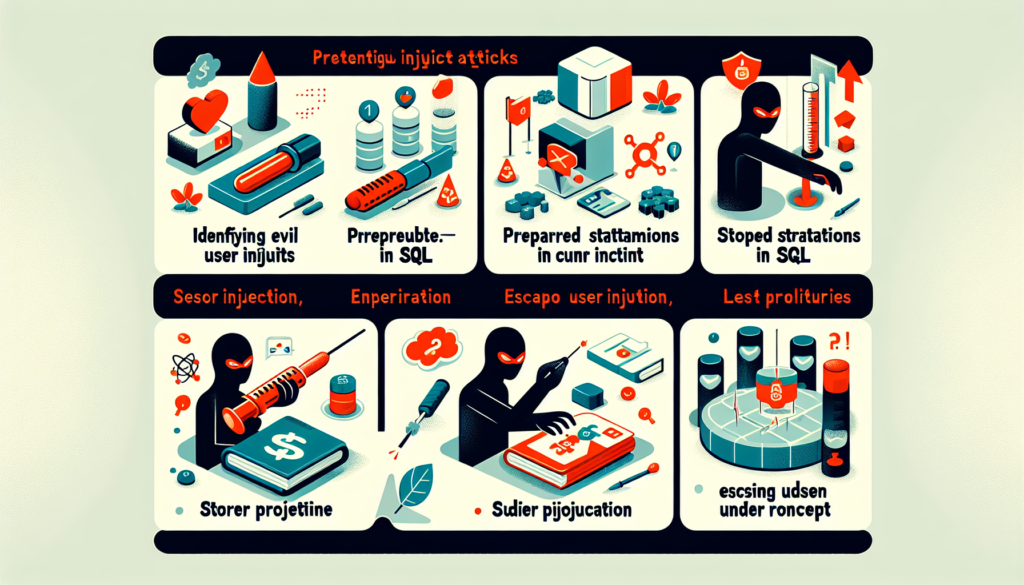Understanding Injection Attacks
Injection attacks are one of the oldest yet most persistent threats on the web. These attacks occur when an attacker is able to send malicious data into a system through a user input point. This data then gets executed as part of a command or query, often leading to unauthorized access or data compromise.
The most common types of injection attacks include SQL injection, command injection, and cross-site scripting (XSS). SQL injection, for instance, targets databases by manipulating SQL queries. Command injection can allow an attacker to execute commands on the server. XSS attacks inject scripts into web pages viewed by other users, allowing attackers to steal cookies or session tokens.
The Mechanics of Injection Attacks
To grasp how to protect against these attacks, it’s essential to understand their mechanics. Typically, injection attacks exploit software vulnerabilities. These vulnerabilities often arise from insufficient input validation. When a user input is not properly sanitized, an attacker can input unexpected commands, wreaking havoc on the system.
An example of SQL injection is when a login form allows for input like this:
username: admin' --This snippet is designed to comment out the rest of the SQL code and potentially bypass authentication. Without proper controls, this could lead to unauthorized access.
Best Practices for Protection
Protecting against injection attacks involves a multi-faceted approach. Here are several key practices:
- Input Validation: Always validate input from users. This means checking for valid data types, lengths, and ranges. Use a whitelist approach when possible, only allowing known, good input.
- Prepared Statements and Parameterized Queries: These methods prevent SQL injection by separating SQL code from data. By using prepared statements, the database can distinguish between code and data, which significantly reduces the risk of injection.
- Stored Procedures: While not a substitute for prepared statements, stored procedures can encapsulate SQL queries in a safe manner, limiting the scope of data execution.
- Regular Updates: Regularly update your software and libraries. Security patches are often released to address known vulnerabilities. Staying updated reduces the risk of exploitation.
- Web Application Firewalls (WAF): A WAF can provide another layer of defense. It monitors and filters HTTP requests to detect and block malicious traffic.
- Security Testing: Conduct regular security assessments, penetration testing, and code reviews to uncover vulnerabilities before they can be exploited.
Educating Your Team
Human error is a significant factor in many security breaches. Educating your development and operations teams about the various types of injection attacks and their implications is crucial. Provide training on secure coding practices and ensure that they understand how to implement security measures in their workflows.
Responding to an Attack
No defense is infallible. It’s essential to have a response plan in place in the event of an injection attack. This includes:
- Incident Response Team: Identify key personnel responsible for responding to security incidents.
- Data Backups: Maintain regular backups of critical data. This ensures that you can quickly restore operations after an attack.
- Monitoring Tools: Use security information and event management (SIEM) tools to detect unusual activity and automate alerts.
- Post-Incident Analysis: After an incident, conduct a thorough review to understand how the attack occurred and what measures can prevent similar issues in the future.
Emerging Threats and Considerations
The technology landscape is always changing, and so are the threats we face. New techniques and methodologies for injection attacks are constantly evolving. Keeping informed about the latest trends in cybersecurity is essential. Engage with the security community, attend conferences, and subscribe to security news outlets. This continual learning mindset will help you anticipate and address the newest threats.
Conclusion
Injection attacks represent a significant challenge for developers and organizations. By understanding how these attacks work and implementing robust security practices, you can greatly reduce the risk of becoming a victim. It’s not just about having security measures in place; it’s about fostering a culture of security awareness and continuous improvement.

